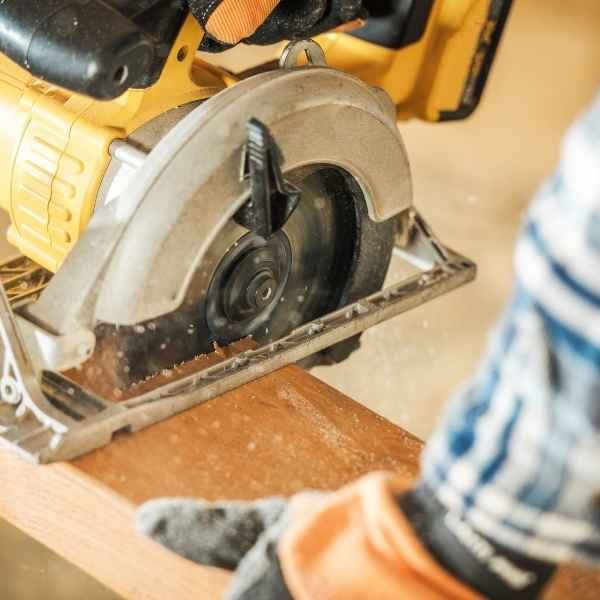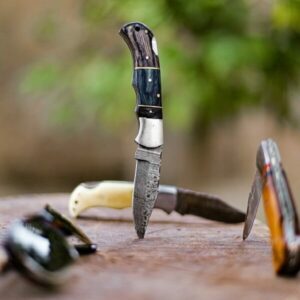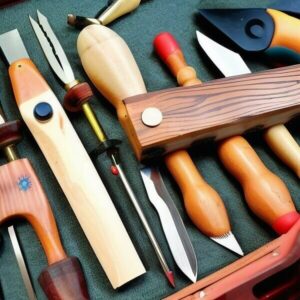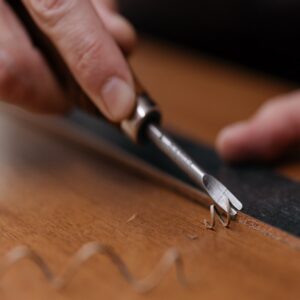When you’re cutting wood, it’s important to avoid splintering. Splinters can cause injury and make the job a lot harder than it needs to be. In this blog post, we’ll discuss some tips on how to avoid splintering when cutting wood. We’ll also provide a few helpful hints on how to fix the problem if it does occur. Let’s get started!
Why Do My Wood Splinters When Cutting?
There are a few reasons why your wood may be splintering when you cut it. One of the most common reasons is that the blade on your saw is dull. When the blade is dull, it can cause the wood to tear rather than cut cleanly. Another reason for splintering could be that you’re not using the right type of saw for the job. For example, if you’re trying to make a precise cut with a hand saw, it’s more likely that you’ll end up with splinters than if you were using a power saw.
Sharpen Your Blade
The first step to avoiding splintering is to make sure your blade is sharp. A dull blade will cause the wood to tear and splinter. If you’re not sure, there are plenty of tutorials online on how to sharpen your blade that can help. You can also take it to a professional if you’re not comfortable doing it yourself.
If you are using a knife or other hand tool, you can also use a honing stone to keep the blade sharp.
Use the Right Blade
The type of blade you use can also make a big difference. For example, if you’re using a circular saw, you’ll want to use a blade that has at least 24 teeth. The more teeth the better. This will help to prevent tear-out and give you a cleaner cut.
There are also specific blades for different types of wood. For example, if you’re cutting plywood, you’ll want to use a blade that’s designed for that specific type of wood. Using the wrong blade can cause the plywood to chip and splinter.
Set Your Saw to the Right Depth
Another important factor is setting your saw to the right depth. If you’re using a circular saw, you’ll want to set the blade so that it’s only cutting through the top layer of wood. This will help to prevent splintering on the backside of the board.
If you’re using a table saw, you’ll want to adjust the fence so that the blade is cutting through the middle of the board. This will help to prevent splintering on both the top and bottom of the board.
Use a Splitting Jig
If you’re still having trouble avoiding splinters, you can try using a splitting jig. This is a special attachment that goes on your saw and helps to keep the blade from wandering. This is a great option if you’re cutting longboards or boards with a lot of curves.
Use a Splitting Wedge
If you’re cutting a piece of wood that’s particularly thick or difficult to cut, you may want to use a splitting wedge. This is a tool that helps to split the wood as you’re cutting it, which can help to avoid splintering.
You can find splitting wedges at most hardware stores.
Using a workbench
If you’re having trouble keeping the wood from moving as you’re cutting it, you may want to try using a workbench. This will help to keep the wood in place and make it easier to cut.
Be sure to clamp the wood down before you start cutting. This will help to prevent it from moving around.
Use a Miter Gauge
If you’re using a table saw, you’ll want to use a miter gauge. This is a tool that helps to guide the wood as you’re cutting it. This will help to prevent the blade from wandering and causing the wood to splinter.
Use Sandpaper
If you do end up with some splinters, don’t worry! You can always use sandpaper to smooth them out. Just be sure to use a grit that’s appropriate for the type of wood you’re working with. If you use too high of grit, you could end up damaging the wood.
Slow Down
When you’re cutting, it’s important to take your time and go slowly. If you rush, you’re more likely to make mistakes that can cause the wood to splinter. Just take your time and be careful.
Use the Right Technique
When you’re cutting, it’s important to use the right technique. For example, when using a saw, make sure to apply even pressure and go with the grain of the wood. If you’re not sure what direction the grain is going, you can always check with a magnifying glass.
It’s also important to use a saw blade that’s the right size for the job. A blade that’s too big can cause the wood to split, while a blade that’s too small can cause it to bind and kick back.
How To Cut Wood With A Circular Saw Without Splintering
If you’re using a circular saw, there are a few things you can do to avoid splintering the wood. First, be sure to use a blade that has at least 24 teeth. The more teeth the better. This will help to prevent tear-out and give you a cleaner cut.
You’ll also want to make sure that the blade is sharp. A dull blade can cause the wood to chip and splinter.
Another important factor is setting your saw to the right depth. If you’re using a circular saw, you’ll want to set the blade so that it’s only cutting through the top layer of wood. This will help to prevent splintering on the backside of the board.
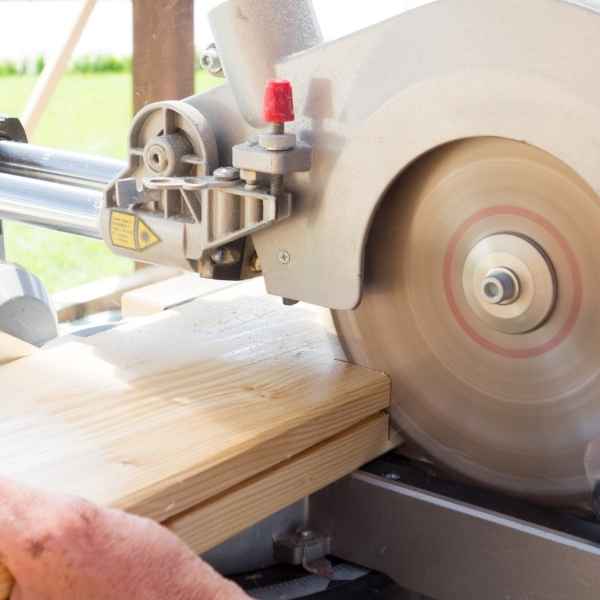
How To Cut Wood With A Table Saw Without Splintering
If you’re using a table saw, you’ll want to adjust the fence so that the blade is cutting through the middle of the board. This will help to prevent splintering on both the top and bottom of the board.
You can also try using a splitting jig. This is a special attachment that goes on your saw and helps to keep the blade from wandering. This is a great option if you’re cutting longboards or boards with a lot of curves.
How To Stop Wood Splintering When Drilling?
If you’re drilling into wood, it’s important to use a drill bit that’s the same size as the hole you want to make. If the bit is too small, it can cause the wood to split.
Another thing to keep in mind is the type of wood you’re working with. Softer woods are more likely to splinter than harder woods. If you’re not sure what type of wood you’re working with, it’s always a good idea to test the drill bit in a scrap piece of wood first.
Finally, be sure to go slowly when drilling. If you drill too quickly, it can cause the wood to split. Just take your time and be careful.
Safety Rules
before you start with the cutting process, it is important to take some time in order to select the right tools and materials. This will help to avoid any accidents or damage to the material. If you’re using a power tool, be sure to read the manual before starting.
Always use safety glasses when working with wood. This will help to protect your eyes from flying debris.
Be sure to wear gloves when working with wood. This will help to keep your hands protected from splinters.
When cutting, be sure to keep your fingers away from the blade. This will help to prevent any accidents.
If you’re using a power tool, be sure to keep the cord away from the blade. This will aid in the prevention of any unpleasant situations.
Conclusion
In conclusion, it’s important to take your time when cutting wood. Be sure to use the right technique and use a sharp blade. If you’re using a circular saw, be sure to set the depth so that you only cut through the top layer of wood. And if you’re drilling into wood, be sure to use a drill bit that’s the same size as the hole you want to make. Following these tips will help you avoid splintering the wood.


